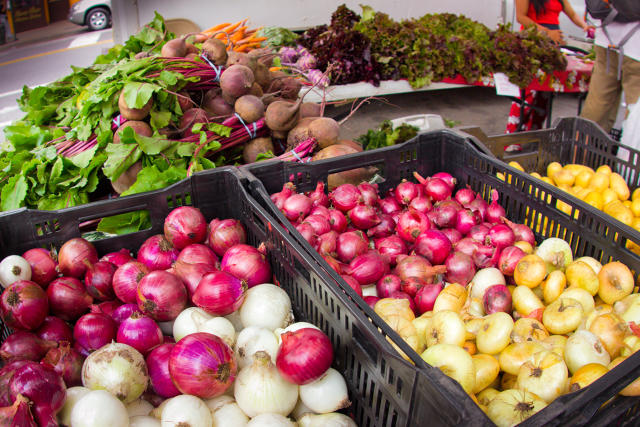Michigan Farmers Markets Make Food Stamps Worth Twice As Much As Regular Money
May 18, 2015
Source: Fast Company
Author: Jay Cassano
The poor get access to healthy food and farmers markets make more money. Win-win.
Americans don’t get anywhere near the recommend amount of fresh fruits and vegetables every day. But that problem is most acute for poor Americans. Lower-income neighborhoods often lack stores that stock fresh produce. And even if impoverished people can find the food they need, they still need to calculate the best caloric bang for their buck to feed their families, which often leaves leafy greens on the shelves.
Farmers markets are a great way to get fresh food. But they often aren't accessible to the poor. The markets are often located in affluent neighborhoods, and shoppers pay a premium for local produce that isn't produced at industrial scale.
Since 2009, A Program of the Michigan non-profit Fair Food Network has worked to bridge this gap. Its Double Up Food Bucks program makes every dollar of Supplemental Nutritional Assistance Program vouchers (aka food stamps) worth two dollars. What began in a handful of farmers markets I Detroit is now expanding state-wide and into grocery stores thanks to a $5.1 million grant from the US Department of Agriculture.
"We’ve proven that Double Up successfully boosts family nutrition and farmer earnings," says Oran Hesterman, president and CEO of Fair Food Network. "With this funding, we’ll reach even more people, supporting healthy food environments and resilient rural and urban communities."
The grant to Fair Food Network is one of several grants totaling $31 million the USDA is making through its Food Insecurity Nutrition Incentive Program. USDA is trying out several different incentive strategies to encourage SNAP participants to purchase more fruits and vegetables.
Fair Food Network's solution is particularly clever because it improves the quality of life for poor people while also providing more income for local farmers. That in turn lets farmers hire more people, strengthening the local economy. Win-win all around.
First posted at Fast Company in May 2015.








